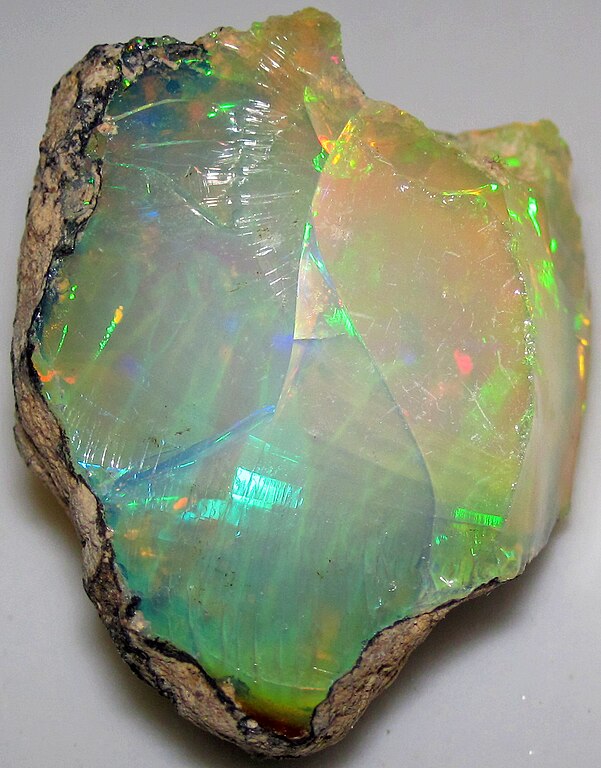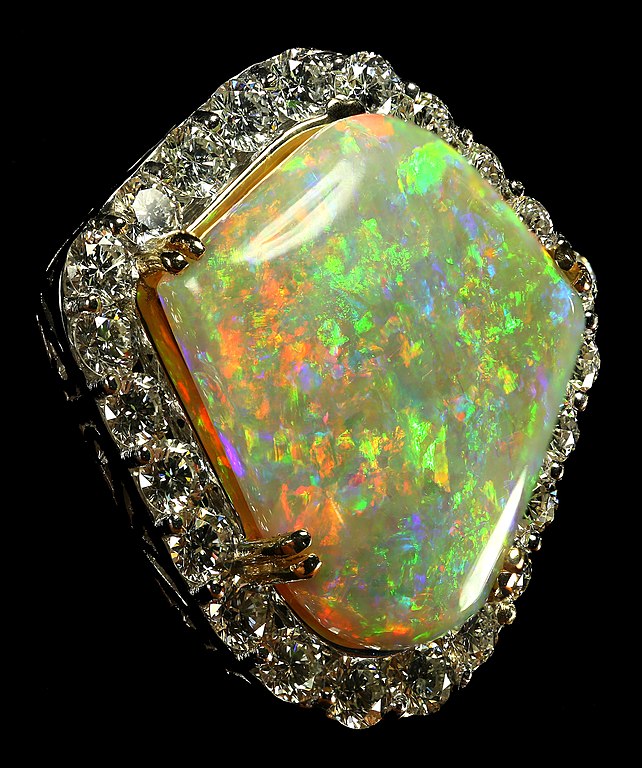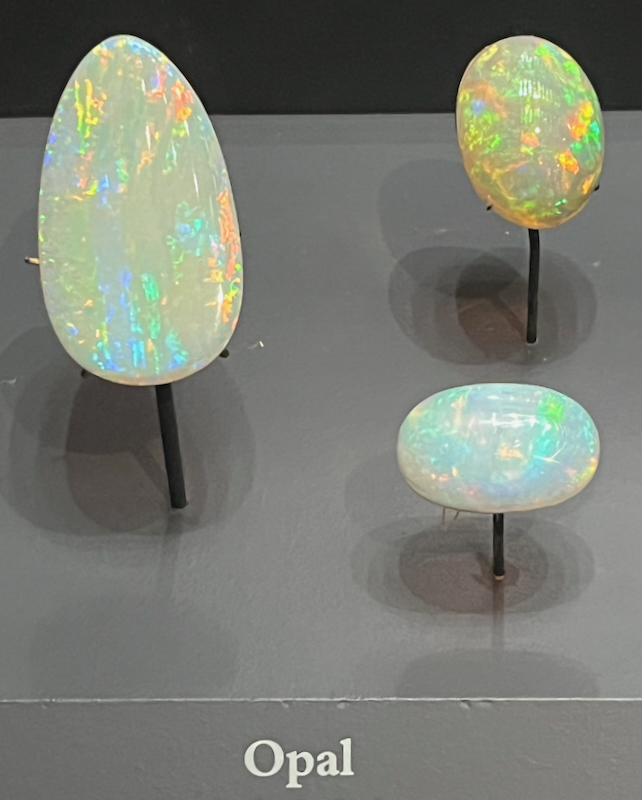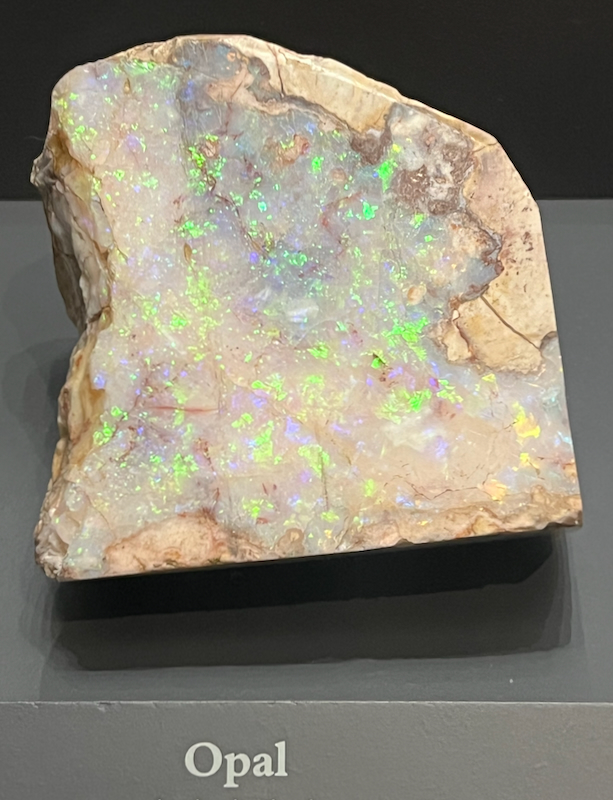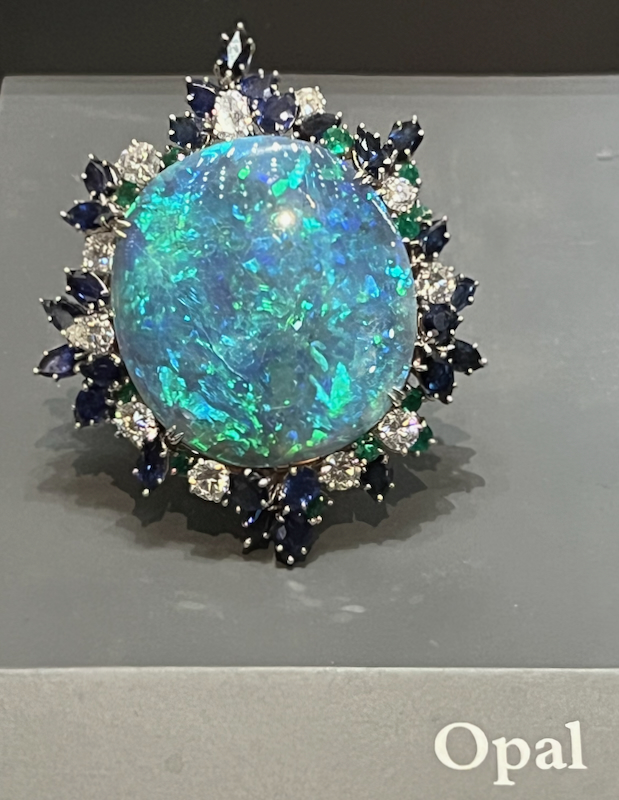Opal
Joining onyx, carnelian, amethyst, and others, opal is a quartz-based mineral valued as a gemstone. It’s divided into two main types—common and precious—and, yes, the precious type is the gemstone. The source of its value is a special kind of iridescence called “opalescence” that’s like a sparkly kaleidoscope of color. Though it’s made of quartz, unlike carnelian, agate, onyx, etc., opal is not a kind of chalcedony. Why not? Chalcedony is made up of microscopic crystals of quartz that are very tightly packed together. Opal is made up of slightly larger spheres of quartz (not crystals) that are slightly less tightly packed together and have some water in between them. Because of the way they’re put together, when light hits opal, it bounces in different ways and directions that cause us to see different colors. Their structure also means they are actually a “mineraloid,” not a mineral. The water part can be important to keep opal from cracking, so some opals are kept in water or are sealed to keep the water in. Opal is found all over the world, with some of the more famous types being Mexican fire opal, Australian black opal, Ethiopian opal, and Nevada black fire opal.
| Formula | Group or Type | Shape | Hardness | Specific Gravity | Streak | Luster |
|---|---|---|---|---|---|---|
| SiO2·nH2O | — | — | 5.5–6 | 1.25–2.23 | White | Vitreous to waxy |
